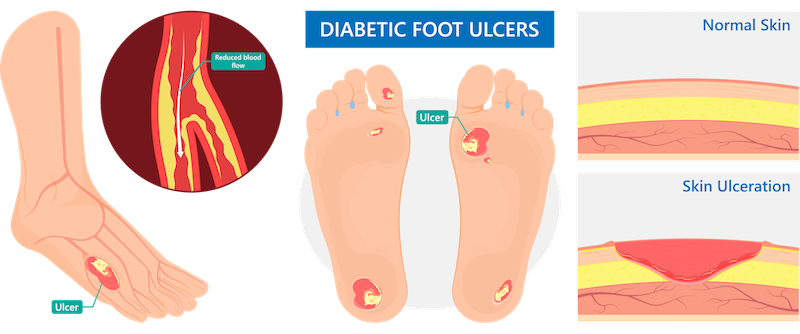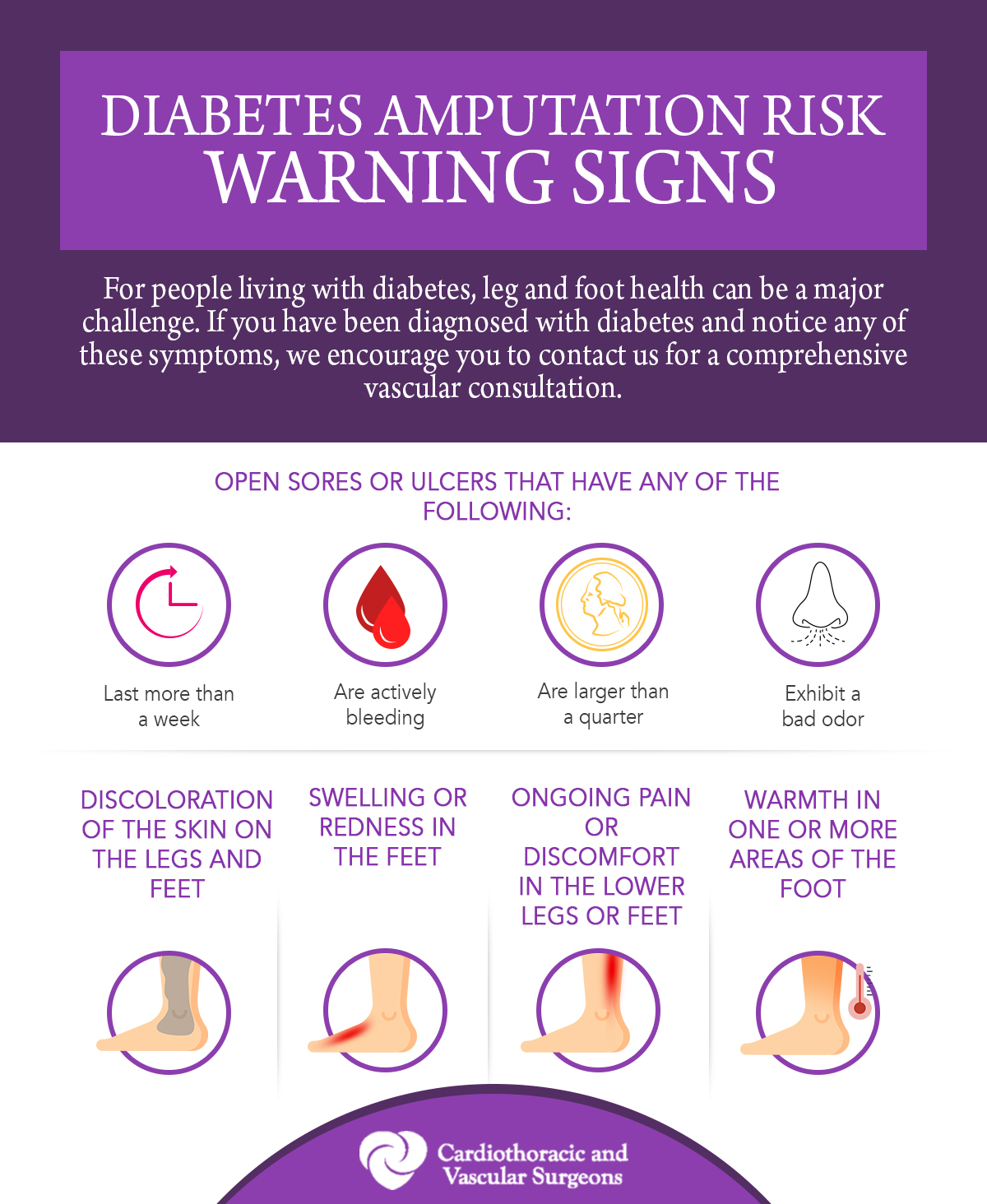More than 25 percent of American seniors have diabetes and 10 to 15 percent of people with diabetes have leg and or foot ulcers. Managing your diabetes and performing daily foot care can help prevent ulcers, which can be difficult to treat and may eventually require amputation. More than 80 percent of amputations begin with foot ulcers, so regimented care is essential.
How to prevent diabetic foot and leg ulcers that can lead to amputation:
- Inspect your feet daily
- Wash your feet daily
- Do not pick at or remove calluses, corns, bunions or warts yourself
- Trim your nails carefully
- Don’t go barefoot, even around your home
- Wear clean, dry socks
- Buy shoes that fit properly
- Don’t smoke
- Schedule regular foot check-ups with your primary doctor or podiatrist
While our vascular specialists do not manage your diabetes, they do help reduce the complications you experience from diabetes. We are experts at establishing blood flow to your lower extremities which helps reduce pain in your legs and heal wounds with the goal to prevent diabetes related amputations.
For more information, contact our Limb Preservation and Amputation Prevention Program Director Jamie Beffort, RN at (512) 323-5873.
Diabetic Foot & Leg Pain
Diabetes can lead to poor blood flow or circulation throughout your body, also known as Peripheral Artery Disease. Poor blood flow can be painful and can cause non-healing wounds to form on your legs and feet.
Patients with diabetes experience leg pain, known as Diabetic Neuropathy, that can also cause numbness in the feet. This numbness is dangerous because it prevents patients from feeling injuries on their feet and puts you at higher risk for a diabetic foot infection.
Injuries can easily occur with a minor bump into a chair, wall, or against the floor. It is important to always wear shoes that fit well. Injuries can also occur when diabetic patients wear ill-fitting shoes that rub blisters on their feet. These blisters can open into a wound, which needs to be evaluated by a doctor immediately.
Our vascular surgeons provide diabetic foot pain treatments with minimally invasive techniques here in our offices. They make sure you have good blood flow to your legs and feet so wounds can heal quickly and without complications. Once our Vascular Surgeon establishes good blood flow to your feet, your primary doctor or podiatrist will manage your diabetes and wound healing going forward.
Diabetic Foot & Leg Ulcers
Diabetes suppresses the immune system and the body’s ability to heal an infection. The area where diabetic leg ulcers are found will frequently look red and feel warm to touch, and may cause pain if you have feeling in your feet. If you experience any signs or symptoms of infection, you need to be seen by a doctor immediately as this can become limb- or life-threatening.
- Non-limb threatening: Oral antibiotics and close follow-up, including in-office evaluation with one of our vascular surgeons
- Limb threatening: May require hospitalization, IV antibiotics and possible surgery with one of our vascular surgeons
For non-limb threatening ulcers, our vascular surgeons can provide diabetic foot ulcer treatments with minimally invasive techniques here in our offices. They will make sure you have good blood flow to your legs and feet so wounds can heal quickly and without complications. Once our vascular surgeon establishes good blood flow to your feet, your primary doctor or podiatrist will manage your diabetes and wound healing going forward.
For limb threatening ulcers, our vascular surgeons will partner with your care team in the hospital to determine the best treatment options for limb preservation.
Written by: Jeffrey Apple, MD | Last Reviewed 8 Mar 2024

Telephone No.512-459-8753


